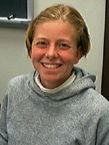Sue Daffinrud
 I became involved in developing the SALG website for several reasons. First, I taught a mathematics class for pre-service elementary education teachers that used almost no lecture and relied heavily on the students to teach themselves with some instructor guidance. The purpose of the class was to move these students away from thinking that mathematics was the domain of mathematicians and to get them to think that they could do math. This meant that I often made them decide how to interpret the questions, how to answer the questions, and how to determine the right answer(s) of many available. The pedagogical approach of this class was not well-suited for the standard end-of-course evaluation form that asks students to rate whether I answered their questions effectively. Had I known of SALG at the time, I would have jumped at using it because its flexibility would have enabled me to fit the questions to my classroom particular classroom.
I became involved in developing the SALG website for several reasons. First, I taught a mathematics class for pre-service elementary education teachers that used almost no lecture and relied heavily on the students to teach themselves with some instructor guidance. The purpose of the class was to move these students away from thinking that mathematics was the domain of mathematicians and to get them to think that they could do math. This meant that I often made them decide how to interpret the questions, how to answer the questions, and how to determine the right answer(s) of many available. The pedagogical approach of this class was not well-suited for the standard end-of-course evaluation form that asks students to rate whether I answered their questions effectively. Had I known of SALG at the time, I would have jumped at using it because its flexibility would have enabled me to fit the questions to my classroom particular classroom.
Second, my experience as an evaluator for higher education programs has taught me that students can provide a very valuable perspective on their own learning that can enhance other forms of assessment especially when they are asked detailed questions, and faculty -- because of the demands on their time -- very much appreciate having a template that they can modify, rather than having to dream up their own questions.
Third, and finally, I have a Masters in computer science and have an interest in programming, especially in creating simple, user-centered software that is widely accessible. The web is a perfect place for this and I am happy to have been a part in the creation of such a useable tool.
Tell me more about this technique:

